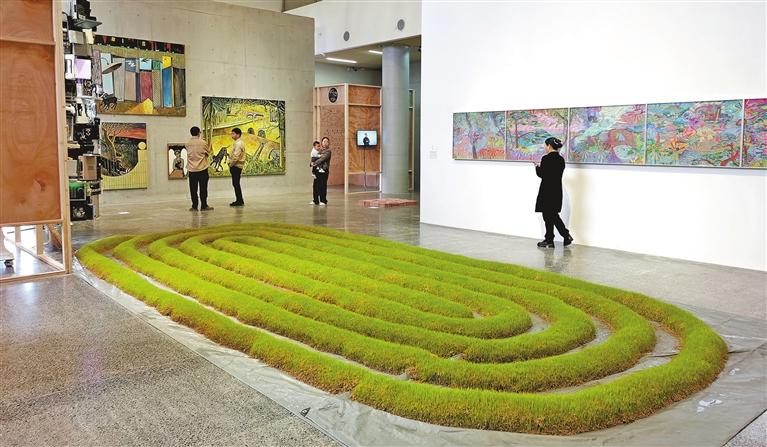
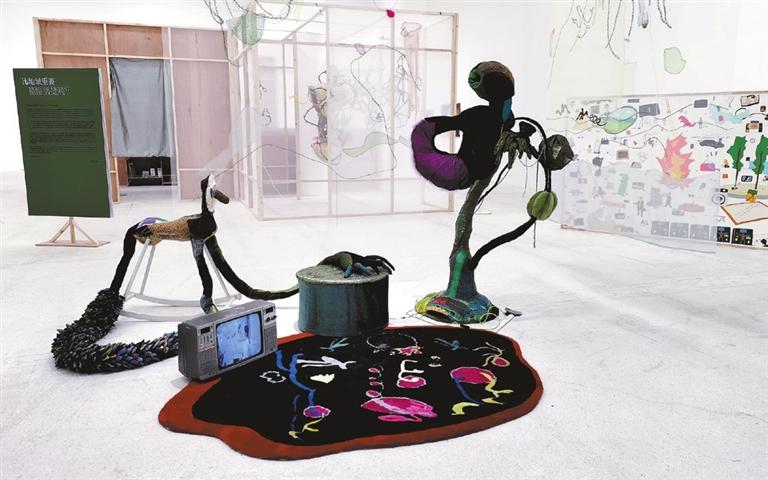
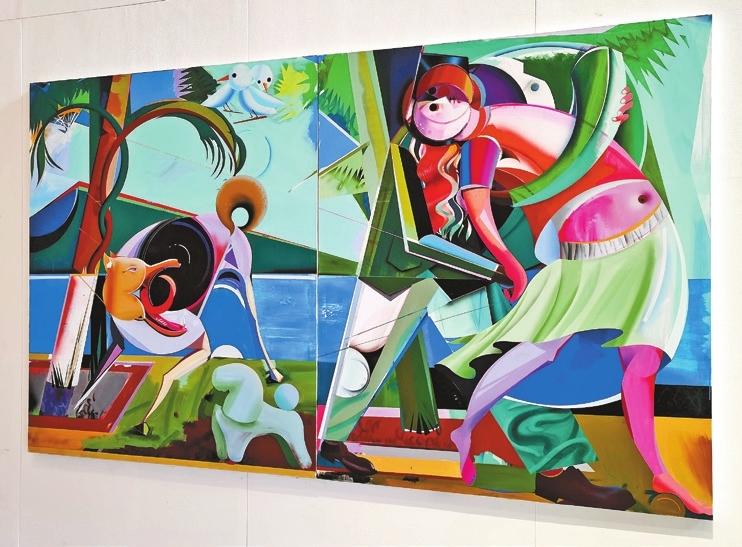
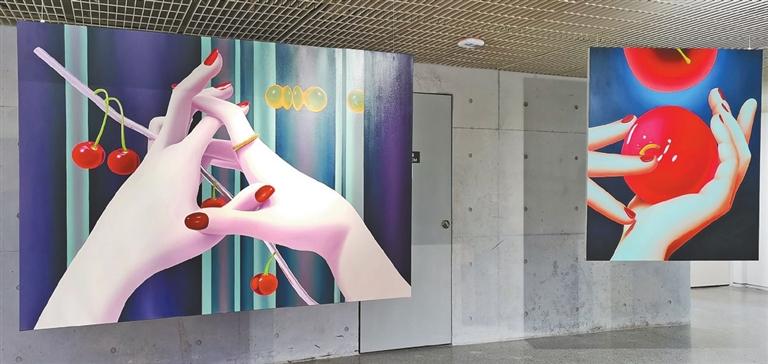
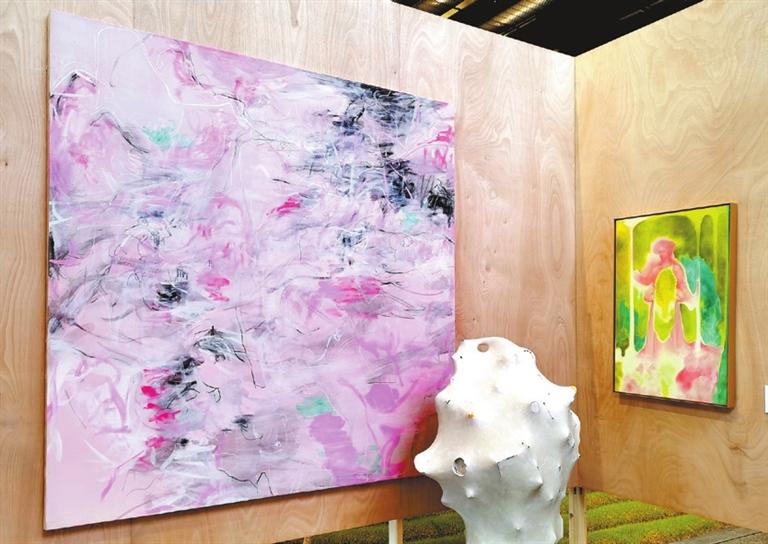
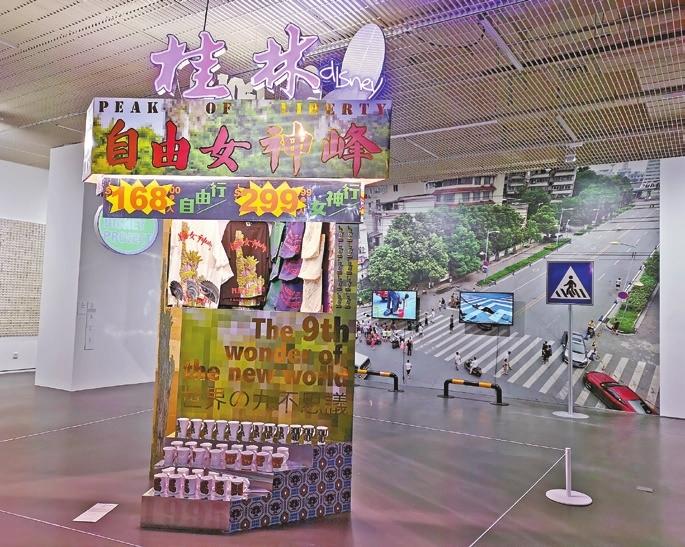
Cao Zhen caozhen0806@126.com THE “Nomads in the South: Rivers, Tunnels, Dampness and Constellations” exhibition at Pingshan Art Museum showcases contemporary artworks created by 101 artists and organizations in Guangdong, Fujian, Jiangxi, Hunan, Guizhou, Yunan, Guangxi, Hainan and Chongqing. The exhibition marks the first attempt to explore the contemporary art scenes and culture environments in southern and southwestern China within one single exhibition. “‘Rivers’ exemplifies the geographical and natural perspective of the south, ‘tunnels’ is a contemporary metaphor for urbanization and modernity, ‘dampness’ captures physical sense, mood and temperament in these regions, and ‘constellations’ embodies our aspiration for the future, a romantic imagination of reconnecting the south,” Cui Cancan, curator of the exhibition, explains in the curatorial statement. He stresses the connections and population mobility in the southern and southwestern regions reflected in the project, as well as the nomadic life of the artists in these areas, asserting that the project is using a more diverse and unique approach to reexamine some fundamental issues of contemporary Chinese art and to envision its future. “Since 2021, Pingshan Art Museum has been focusing on local art ecology, first planning the ‘Shenzhen Contemporary Artists Series’ exhibitions, showcasing works of eight Shenzhen artists. Now we are seeking broader connections in the south and are promoting young artists through the project. During our month-long field work in the regions, we collaborated with five local curators who served as observers for the exhibition,” said Liu Xiaodu, director of the art museum. On Dec. 23, 2023, the five observers — Chen Bolin (Chaoshan area, Fujian), He Ling (Hunan, Jiangxi), Hu Bin (Guangzhou, Shenzhen), Luo Fei (Guangxi, Yunnan) and Ni Kun (Guizhou, Chongqing) — and other people involved in the project shared their insights at a talk at Pingshan Art Museum. “In Chongqing, a temporary artistic community has formed through art residencies, bringing together artists, curators and institutions, which is a mobile state. In Guizhou, young artists participate in projects to get themselves involved in art scenes. These practices have provided new paths for local art development,” said Ni. “Compared to holding exhibitions at large art spaces, organizing or participating in small projects have become the norm. Due to the low cost in Chongqing, we can continuously do small projects to release new artworks efficiently. Some exhibitions may last only two days, but we believe that the expression of the artists and fostering connections are paramount,” Ni added. “In Yunnan, international exchange projects, art residency programs and artist organizations are thriving. Artists in Guangxi are relatively dispersed, and young artists no longer adhere to the old group-based working methods,” shared Luo. “In the past five years, major art museums such as the Hunan Art Museum, the Li Zijian Art Museum and the Xie Zilong Photography Museum have emerged in Hunan. Private art organizations have also developed, forming a vibrant art ecosystem. Contemporary artists born in the 1980s have different career paths in Hunan; some have stable creative statuses, while others intermittently interact with their native region. There are also overseas-educated Chinese artists, with independent and broad perspectives. Local institutions in Hunan can support their creation, exchanges and livelihood,” observed He. “There are no art colleges in the Chaoshan area [Shantou, Chaozhou, Jieyang, Shanwei in east Guangdong] and Fujian but there’s still a strong educational environment for art. Artists in this region often intertwine their lives with art. Despite dedicating minimal time for creation, they maintain their artist identity, a phenomenon which is worth exploring,” expressed Chen. Some artists and curators also shared their unique experiences during the talk. Anna Novikova, a curator of Contemporary Gallery Kunming, highlighted that “Site-specific art emphasizes an individual’s curiosity, exploration and discovery of local culture rather than simply showcasing the beauty of ethnic culture to the outside world.” “When curating exhibitions, our exploration involves not only the direct connections between artists and Yunnan but also the connections with the international community. We also need the involvement of curators with richer cultural backgrounds to establish broader relationships. This engagement not only aids us in transcending geographical boundaries but also helps us reevaluate Yunnan’s art ecosystem,” she added. Shi Tian, an artist engaged in the Miao ethnic dialect, said: “Our Miao Dialect Translation Office is a WeChat group consisting of nine members in Guiyang, Wenshan, Wenzhou and Laos. Since the Miao dialect is our mother tongue, we are dedicated to raise awareness of our mother tongue through artistic means. We have also translated some modern words, such as takeaway, barbecue, computer and high-speed train into the Miao dialect, trying to inject new elements into the dialect.” The exhibition is free and the ending date hasn’t yet been announced. Venue: Pingshan Art Museum, Pingshan District (坪山美术馆) Metro: Line 14 to Pingshan Square Station (坪山广场站), Exit D1 | 
